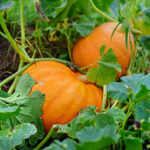
Welcome to our comprehensive guide on planting, growing, and harvesting basil. Basil, a beloved culinary herb, adds a delightful flavor and aroma to dishes, making it a must-have for any herb garden. In this guide, we will provide expert tips and step-by-step instructions to help you cultivate and harvest your own basil. From choosing the right variety to ensuring optimal growth conditions, we have you covered. Let’s dive in!
Section 1: Getting to Know Basil
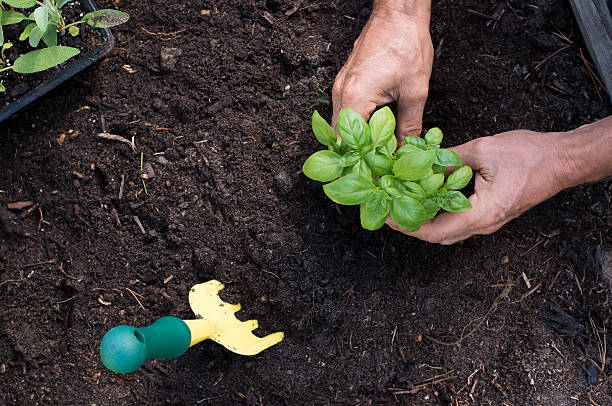
About Basil
Basil, scientifically known as Ocimum basilicum, belongs to the mint family (Lamiaceae) and is renowned for its versatility in the kitchen. As a warm-weather annual herb, basil thrives when temperatures consistently exceed 50°F.
While basil can be directly sown into the soil, many gardeners prefer to start with small starter plants purchased from a nursery or by germinating seeds indoors under grow lights.
The most common variety is common or sweet basil (Ocimum basilicum), but there are also other exciting options to explore, such as purple basil (with a slightly less sweet flavor), lemon basil (infused with a refreshing lemony taste), and Thai basil (which offers a delightful licorice flavor). Depending on your intended use, growing one or two basil plants will usually yield an abundant supply.
Section 2: Planting Basil
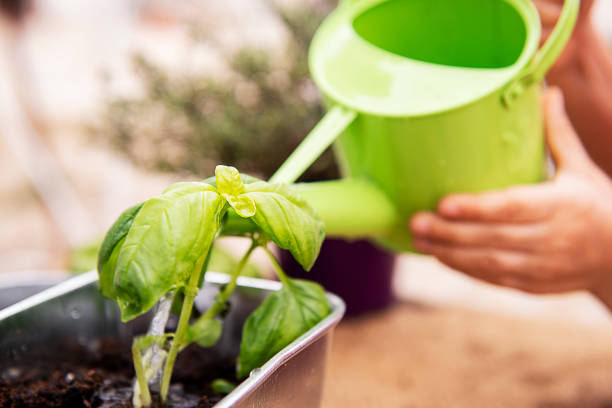
Choosing the Right Location
For optimal growth, basil requires a location that receives 6 to 8 hours of full sun daily, although it can still thrive in partial sun conditions. When selecting a spot for your basil plants, ensure that the soil is moderately fertile, well-draining, and slightly acidic to neutral (with a pH range of 6.0 to 7.5). If you plan to use the basil in your cooking, it’s essential to plant it in clean soil, away from driveways and busy streets, to avoid exposure to exhaust fumes.
Determining the Planting Time
To get a head start on the growing season, start basil seeds indoors 6 to 8 weeks before the intended transplanting date. Check your local frost dates to determine the ideal time for outdoor planting. Wait until the soil has warmed to at least 50°F, preferably around 70°F, to ensure optimal growth. Nighttime temperatures should not drop below 50°F to prevent any damage to the young plants.
Planting Techniques
If you choose to sow basil seeds directly into the ground, plant them no deeper than 1/4 inch. Germination typically occurs within 5 to 7 days. Once the seedlings have developed 2 to 3 pairs of true leaves, it’s time to transplant them. If you’re using starter plants, space them 10 to 12 inches apart in the ground. Basil plants generally reach a height of 12 to 24 inches.
To promote moisture retention and weed control, apply a 2- to 3-inch layer of compost or ground-up leaves as mulch around the basil plants. This will also help maintain a consistent soil temperature and prevent the growth of unwanted weeds. As an added benefit, consider planting basil alongside tomatoes in your garden, as these warm-weather companions thrive together and complement each other in both the garden and on your plate.
Section 3: Growing Basil
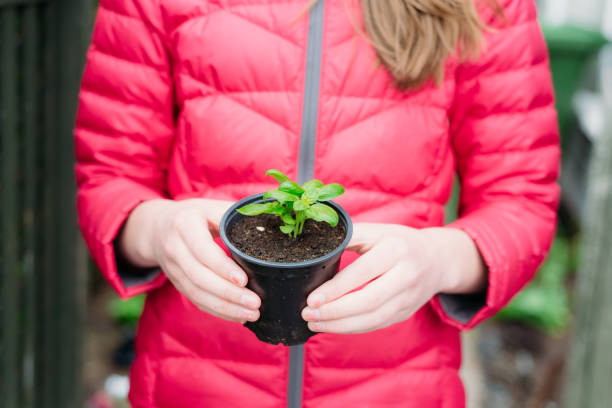
Essential Care Tips
Basil plants require consistent moisture to thrive. Ensure that the soil remains moist by regularly watering them, especially during dry periods in the summer. Mulching around the plants will help retain moisture and suppress weed growth.
In hot regions, using additional mulch is particularly beneficial, as it aids in moisture retention and provides weed suppression. Be vigilant about watering during dry spells to prevent the plants from drying out.
Pruning and Pinching
After the seedlings have developed their first six leaves, prune them just above the second set of leaves. This pruning technique stimulates branching, leading to increased foliage production. Repeat the pruning process whenever a branch develops six to eight leaves, cutting back the branches to the first set of leaves. Regularly pruning and pinching encourage the basil plants to bush out and produce more leaves for harvest.
Fertilization
While basil plants generally do not require excessive fertilization, applying a balanced 5-10-5 fertilizer sparingly throughout the growing season can provide them with essential nutrients. Be cautious not to over-fertilize, which can lead to excessive foliage growth and reduced flavor intensity. Follow the manufacturer’s instructions for application rates and timing.
Preventing Flowering
To prevent premature flowering, pinch off the center shoot after approximately six weeks of growth. This action diverts the plant’s energy from flower production to leaf development, ensuring a more abundant harvest. If flowers do appear, promptly remove them to maintain optimal leaf growth and flavor.
Protecting Against Cold Weather
If you anticipate cold weather or an approaching frost, harvesting your basil beforehand is crucial. Basil plants are sensitive to cold temperatures, and exposure to ice can cause irreversible damage. To safeguard your plants, carefully monitor weather forecasts and take appropriate measures to protect your basil when needed.
Section 4: Harvesting and Storing Basil
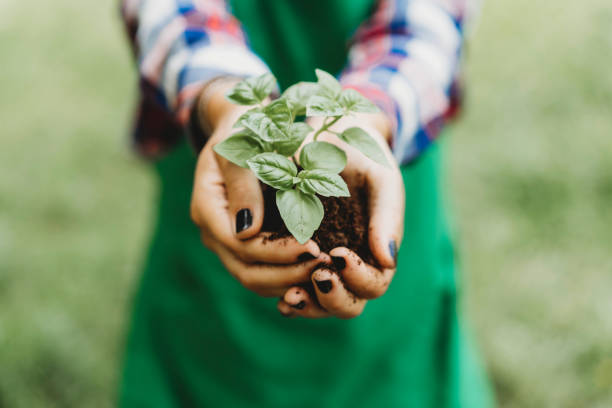
Harvesting Tips
Begin harvesting basil leaves when the plants reach 6 to 8 inches. As temperatures rise above 80°F, the basil plants will exhibit increased leaf production. For the freshest and juiciest leaves, harvest your basil in the early morning when the essential oils are at their peak.
Regularly pick the leaves, even if you don’t require them, as this encourages continued growth throughout the summer. By harvesting regularly, you can expect a yield of 4 to 6 cups of basil leaves per week from twelve plants.
Proper Storage Techniques

To preserve the flavor of your basil for future use, freezing is the best method. Quick-freeze basil by packaging whole or chopped leaves in airtight, resealable plastic bags before placing them in the freezer. This method helps retain the maximum flavor and prevents the herb from losing its taste.
Drying basil is another storage option, although some flavor loss may occur. To dry basil, pinch off the leaves at the stem and place them in a well-ventilated and shady area.
After 3 to 4 days, if the leaves are not completely dry, you can place them in the oven on the lowest heat setting with the door slightly open. Turn the leaves periodically for even drying and monitor them frequently to prevent burning. For more detailed instructions on drying basil and tips for drying tomatoes and paprika, refer to our comprehensive drying guide.
Conclusion
With this comprehensive guide, you now have the knowledge and expertise to plant, grow, and harvest basil successfully. Whether you’re a seasoned gardener or a beginner, following these step-by-step instructions will help you cultivate a bountiful basil harvest. Enjoy the rich aroma and flavor of your homegrown basil in various culinary creations, from pesto sauces to savory dishes. Happy gardening!


